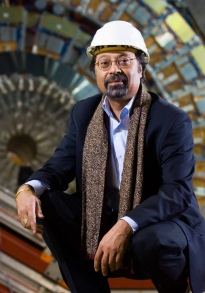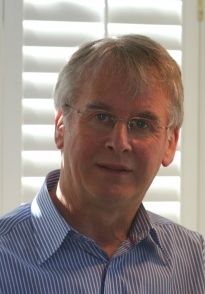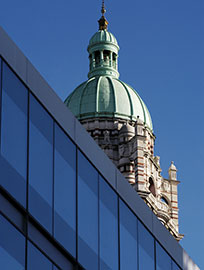

An evolutionary biologist, a pharmacologist and four physicists from Imperial College London have joined the Fellowship of the Royal Society this week as part of the 2012 election of 44 new fellows - News
By Simon Levey
Friday 20 April 2012
See also:
An evolutionary biologist, a pharmacologist and four physicists from Imperial College London have joined the Fellowship of the Royal Society this week as part of the 2012 election of 44 new Fellows.
They join the ranks of around 1,450 elite scientists in the UK and around the world who recognised by the UK's national scientific academy for their contributions to science and are now permitted to use the letters FRS after their name. They bring the number of Royal Society Fellows at Imperial, or with an ongoing association with the College, to 73.

Professor Michele Dougherty
Professor Michele Dougherty (Physics) is a space physicist and Principal Investigator of the Cassini magnetometer instrument, which was launched onboard the Cassini-Huygens spacecraft in 1997.
The mission reached Saturn in 2004, where it went into orbit and began collecting information on the structure and behaviour of the planet's giant rings, its atmosphere, the magnetic field environment surrounding the giant gas planet, and the many icy moons in orbit around it. Through Cassini, Professor Dougherty and her team made the unexpected discovery that one of Saturn's small moons, Enceladus, is emitting clouds of water vapour from cracks at its south pole.
Professor Dougherty is now the lead scientist for the European Space Agency's JUpiter ICy moons Explorer (JUICE) / Laplace mission, which is a strong candidate to be launched as the first large European spacecraft mission in 2022.
"I'm delighted and privileged to have been elected to the Royal Society. It is wonderful and very exciting to have one's work honoured in such a way. I would like to thank my many colleagues I have worked with over the years, at Imperial and on the Cassini team – I am indebted to them for their support and the interactions and collaborations we have had," she said.
Professor Dougherty was awarded the Royal Society Hughes medal in 2008 and the Institute of Physics Chree medal in 2007, recognising her leadership on the Cassini mission and the discovery of a dynamic atmosphere at Enceladus.

Professor Russell Lande
Professor Russell Lande (Life Sciences) is a theoretical biologist who early in his career pioneered the use of genetics to study the evolution of continuous traits (such as height or weight) in natural populations.
He is distinguished for his work in theoretical population biology, both population genetics and population dynamics, and for its applications in conservation biology. He has made important contributions to the statistical analysis of populations, and is influential in the field of conservation biology. His work has had numerous applications, and is the basis for the modern IUCN (International Union for Conservation of Nature) Red List Criteria for classifying relative extinction risk, while his expert testimony has underlain the way the US Endangered Species Act has been interpreted and implemented.
In 2011 Professor Lande won the prestigious International Balzan Prize, which recognises 'outstanding initiatives of peace and brotherhood among peoples and foster their growth in the scientific and cultural world'.

Professor Chris Hull
Professor Chris Hull (Physics) is a theoretical physicist distinguished for his pioneering work string theory, a concept that aims to unify all of the forces and particles of nature in a single quantum theory.
His work led to a revolution in string theory, uniting the various known theories within a single framework that was no longer a theory just of 1-dimensional strings, but now included higher-dimensional objects known as branes. In this theory, a central role was played by 'duality symmetries' that constitute a new kind of relativity. His vision went against the received ideas of the time but has since been widely accepted by the physics community and has laid the foundation of what has become known as 'M-theory'.
Professor Hull began his career as a graduate student in Professor Stephen Hawking’s group in Cambridge. He came to Imperial in 2003, since when he has been Head of the Theoretical Physics Group and has led the String Theory and Geometry research programme at the Institute of Mathematical Sciences.
"I am very pleased and honoured that my work has been recognized in this way. Key parts were done in a very enjoyable collaboration with Paul Townsend of University of Cambridge, and I still remember the extraordinary thrill we felt when we saw the first indications of the possible significance of what we were discovering," said Professor Hull.

Professor Tejinder Virdee
Professor Tejinder (Jim) Virdee (Physics) for several years led the team of thousands of international scientists that designed and built the Compact Muon Solenoid (CMS) detector - one of the two main experiments at CERN's Large Hadron Collider and one of the most complex scientific instruments ever built, weighing 14,000 tonnes and with a length of 30m and a diameter of 15m.
The scientists working on CMS are hoping to solve some of the mysteries of nature, such as where mass comes from, what is the composition of dark matter, whether there are more than three spatial dimensions, and taking steps towards a much fuller understanding of how our universe works. A key element of this is looking for signs of the elusive Higgs boson particle, which has been theorised but has never actually been seen. At the end of 2011, researchers at the Large Hadron Collider reported what have been described as tantalising hints of the Higgs boson, but these are not yet strong enough to claim a discovery. They expect that data being taken in 2012 will clarify the situation.
"I am truly honoured and delighted to be elected Fellow of the Royal Society. This is a recognition of the tremendous work that has been accomplished during the last 20 years in the CMS experiment, a technological marvel that has pushed many boundaries. The construction of CM S has required the talents and resources of thousands of scientists and engineers worldwide. For me pe rsonally, it has been particularly satisfying to follow CMS from its conception to the construction and nowadays its successful operation in its quest for the Higgs boson and new physical phenomena," said Professor Virdee.
Professor Virdee completed his PhD at Imperial in 1979 and was appointed professor in the High Energy Physics Group in 1996.
On 1 May 2012, Professor Virdee will deliver a free public lecture at Imperial's South Kensington Campus. He will talk about how the experiments at CERN are addressing some of the most fundamental questions about our universe. Members of the public may register to attend by visiting Imperial's events pages.

Emeritus Professor Timothy Williams
Emeritus Professor Timothy Williams (National Heart and Lung Institute) is recognised for his contribution to the understanding of mechanisms underlying inflammation. He was appointed as Asthma UK Professor of Applied Pharmacology in 1988 and established Leukocyte Biology Section at Imperial in 1998 in the newly-opened Sir Alexander Fleming Building.
His early work delineated important links between major features of inflammation, tissue swelling, blood vessel dilatation and white blood cell accumulation: findings published in a series of five highly-cited papers in the journal Nature. He later discovered Eotaxin, a protein which is produced in the lungs of asthmatic patients and stimulates the accumulation of large numbers of a type of white blood cell known as eosinophils. These cells make an important contribution to the progress of the disease. This work was the basis of several drug development programmes and Eotaxin is widely measured in experimental models of asthma and in clinical trials. Unexpectedly, Eotaxin is also implicated in atherosclerosis in blood vessels, age-related macular degeneration in the eye and the regeneration of nerve cells in the brain.
"The election to the Fellowship is a great honour for me and made possible by all the wonderful colleagues who have worked with me over the years," Professor Williams said.

Visiting Professor Jeremy Burroughes
Visiting Professor Jeremy Burroughes (Physics) is one of the co-inventors of conjugated polymer electroluminescence, allowing light to be efficiently generated by passing electrical current through thin films of the plastic poly(p-phenylenevinylene).
This discovery, made with Imperial's Professor Donal Bradley and University of Cambridge Professor Richard Friend, has led in recent years to the development of light-emitting displays. It triggered the field of plastic electronics, with the potential to bring significant developments in energy, environment and healthcare, such as in solar power generation, new, energy efficient computer displays and solid-state lighting, pervasive electronics, imaging and sensing arrays, and photonics.
Dr Burroughes is a joint founder and latterly Chief Technology Officer of Cambridge Display Technology Ltd (a wholly owned subsidiary of the Sumitomo Chemical Company), which is developing light emitting polymers for display and lighting applications and plastic electronics more generally. He has been a visiting professor in Imperial's Department of Physics since 2009 and chairs the Advisory Board for the College's Centre for Plastic Electronics and EPSRC Centre for Doctoral Training in Plastic Electronic Materials and Devices.
Article text (excluding photos or graphics) available under an Attribution-NonCommercial-ShareAlike Creative Commons license.
Photos and graphics subject to third party copyright used with permission or © Imperial College London.





